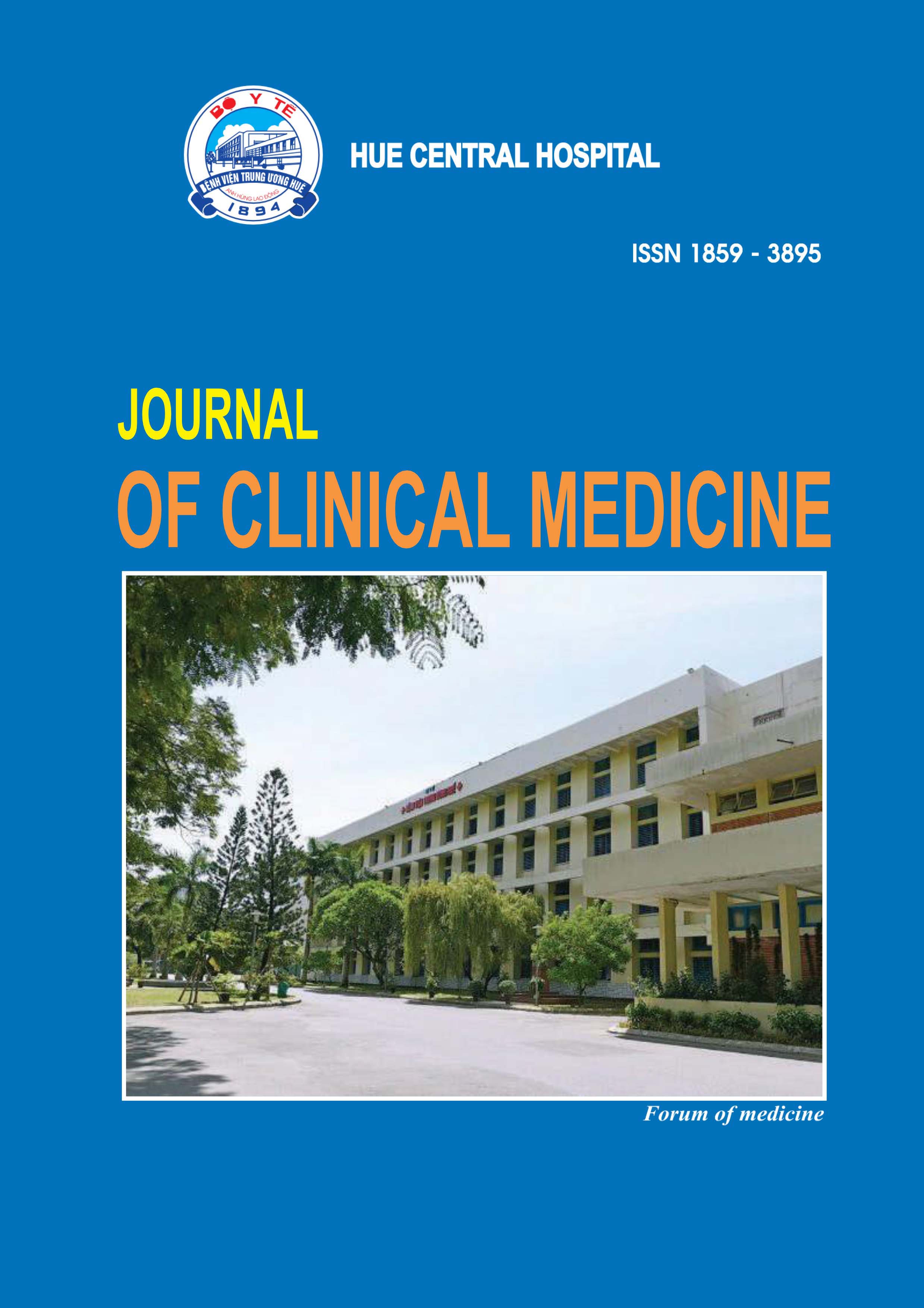Abstract
Objective: This study attempted to report the initial results: the safety and efficacy of transcatheter closure
of ventricular septal defects (VSDs) at Hue Central Hospital with the short and medium-term follow-up.
Methods: From September 2012 to May 2017, a total of 36 patients with perimembranous or muscular
VSD underwent an attempt of transcatheter closure at the Department of Interventional Cardiology, Hue
Central Hospital.
Results: 14 males and 26 females participated in this study, with the age of 17.29 ± 13.72 and
24.23 ± 12.32 respectively. Among these patients, 19.44% of them were under 6-year-old; 72.22% had
perimembranous VSDs, 27.78% had muscular VSDs, and 33.33% had aneurysm. The distance to AV was
5.62 ± 4.32 mm. The device size was 15.31± 8.12 mm. Procedures lasted for 57.17 ± 26.5 min with 15.31±
8.12 min of exposure. The complete closure rates by transthoracic echocardiography after 24 hours, 1
month, 3 months and 6 months (transthoracic) were 94.44%; 94.44% ; 97.22% and 100%, respectively.
Mean time of follow-up was 11.92 ± 8.36 (3-38) months. Success rate was 97.22% and no death occurred.
There was 1 case of hematuria, lasting 1 month; no Atrioventricular (AV) block.
Conclusions: Transcatheter closure of VSDs is a novel, feasible and safe technique with high success
rate (97.22%). The transcather approach provides a less invasive alternative than surgical closure and
might become the first choice treatment in selected patients.
References
Trung ĐH, Thông liên thất, Bệnh học Tim mạch tập 2. 2006: Nhà xuất bản Y học.
Lock J, Block P, McKay R, Baim D, Keane JJC. Transcatheter closure of ventricular septal defects. 1988; 78: 361 - 368.
Hiếu NL, Hiếu TB. Đánh giá kết quả đóng thông liên thất phần quanh màng bằng dụng cụ bít ống động mạch qua đường ống thông. Tạp chí Y học thực hành 2013; 866: 135 - 138.
Bình TQ, Phi LT, Tín ĐN, Nga BTX, Vũ VH. Hiệu quả bước đầu của thông tim can thiệp TLT tại Bệnh viện Đại học Y Dược - Thành phố Hồ Chí Minh. 2010.
Carminati M, Butera G, Chessa M, De Giovanni J, Fisher G, Gewillig M, et al. Transcatheter closure of congenital ventricular septal defects: results of the European Registry. 2007; 28: 2361 - 2368.
Arora R, Trehan V, Kumar A, Kalra G, Nigam MJJoic. Transcatheter closure of congenital ventricular septal defects: experience with various devices. 2003; 16: 83 - 91.
Butera G, Carminati M, Chessa M, Piazza L, Micheletti A, Negura DG, et al. Transcatheter closure of perimembranous ventricular septal defects: early and long-term results. 2007; 50: 1189 - 1195.
Yang J, Yang L, Wan Y, Zuo J, Zhang J, Chen W, et al. Transcatheter device closure of perimembranous ventricular septal defects: mid-term outcomes. 2010; 31: 2238 - 2245.
Predescu D, Chaturvedi RR, Friedberg MK, Benson LN, Ozawa A, Lee K-JJTjot, et al. Complete heart block associated with device closure of perimembranous ventricular septal defects. 2008; 136: 1223 - 1228.
| Published | 20-06-2020 | |
| Fulltext |
|
|
| Language |
|
|
| Issue | No. 62 (2020) | |
| Section | Original article | |
| DOI | 10.38103/jcmhch.2020.62.1 | |
| Keywords | transcatheter closure, ventricular septal defects transcatheter closure, ventricular septal defects |

This work is licensed under a Creative Commons Attribution-NonCommercial-NoDerivatives 4.0 International License.
Copyright (c) 2020 Journal of Clinical Medicine Hue Central Hospital

